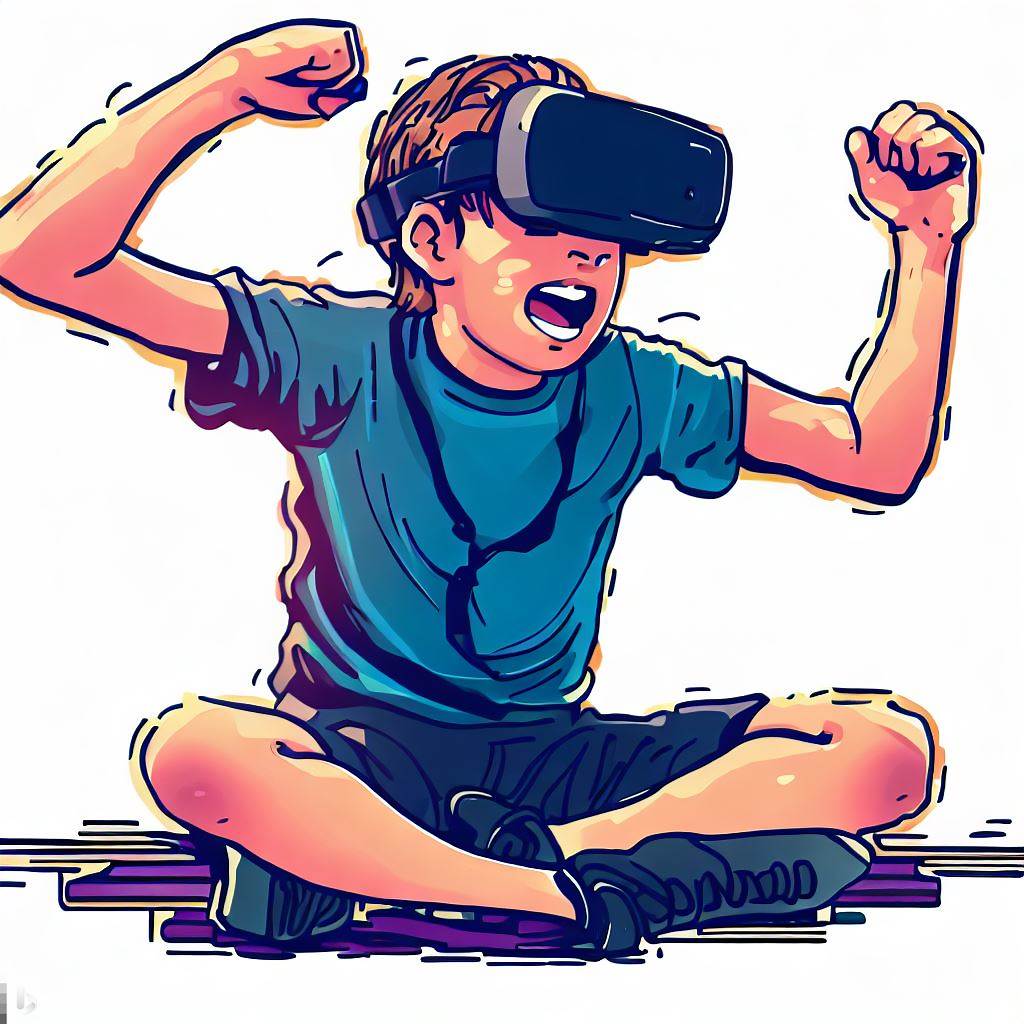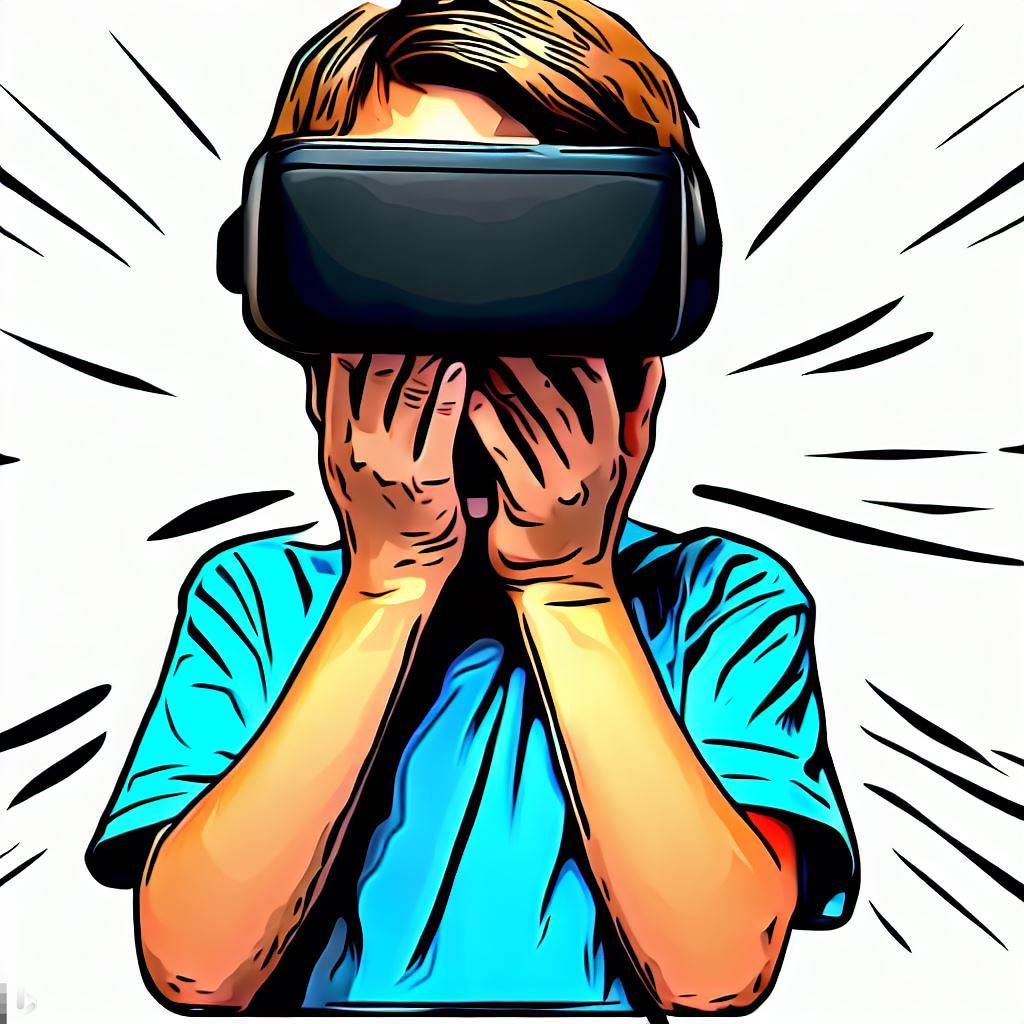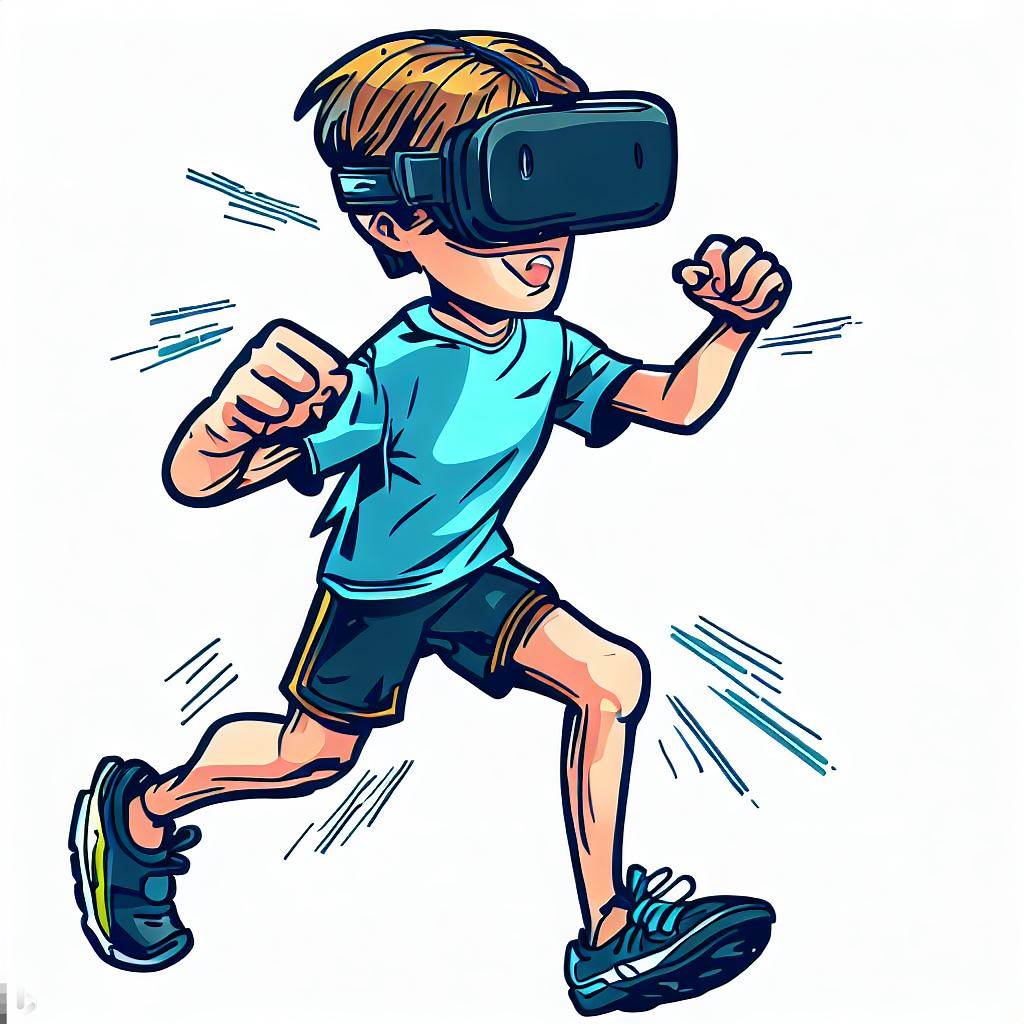VR isn’t recommended for kids under 13 due to concerns regarding the developing brain, cognitive and emotional factors, and potential physical health and safety issues. Additionally, ensuring age-appropriate content is essential to protect young children from potentially harmful experiences in the virtual realm.
Hi! Today, we’re going to dive into a topic that has been generating quite a buzz in the world of virtual reality (VR): the age restrictions and recommendations for children using VR technology. As VR becomes more widespread and accessible, it’s natural for parents and guardians to wonder if these immersive experiences are suitable for their kids.
In this article, we’ll discuss the crucial factors behind the recommendation that children under 13 should refrain from using VR. We’ll look at various aspects, such as developmental concerns, potential health risks, and the importance of age-appropriate content. Our goal is to provide you with a comprehensive understanding of the reasons behind this recommendation, so you can make informed decisions about your child’s exposure to VR.
So, buckle up and join me on this enlightening journey as we explore the world of virtual reality through the lens of child development and safety!
The Developing Brain: Cognitive and Emotional Factors

One of the primary reasons why VR isn’t recommended for children under 13 is the potential impact on their developing brains. Young minds are constantly growing and changing, and introducing virtual reality experiences during this crucial stage may pose cognitive and emotional risks. Let’s explore these factors in more detail.
Cognitive Development 🧠💡
The brain of a child under 13 is still developing crucial cognitive functions, such as memory, attention, and problem-solving. Introducing VR at a young age might disrupt the normal development of these skills, as the immersive nature of the technology may interfere with the brain’s ability to differentiate between virtual and real experiences. This confusion could potentially hinder a child’s ability to process and retain information, impacting their learning and cognitive growth.
Studies on the long-term effects of VR on cognitive development are still limited. As the technology is relatively new, more research is needed to fully understand the potential impact on children’s brains.
Emotional Development 💓
The emotional development of children is another critical factor to consider. Young kids are still learning to regulate their emotions and respond to various situations appropriately. VR experiences can be intense, and some children may not be ready to handle the emotional stress that comes with navigating virtual environments.
Moreover, since VR can create realistic and immersive experiences, children may have difficulty distinguishing between their feelings in the virtual world and the real world. This blurring of boundaries could lead to heightened emotional responses, impacting a child’s ability to process and manage their emotions effectively.
Social Development 🗣️
Social development is another important aspect to consider when discussing VR’s potential impact on children under 13. While some VR platforms offer social experiences, they may not provide the same quality of interaction as real-life social situations. Over-reliance on VR for social interaction could hinder a child’s ability to develop essential social skills, such as understanding non-verbal cues, building empathy, and forming genuine connections with others.
In conclusion, the developing brain of a child under 13 is susceptible to the potential cognitive, emotional, and social risks associated with VR use. While more research is needed to fully understand the long-term effects, experts recommend erring on the side of caution and limiting children’s exposure to VR until they reach the age of 13.
Physical Health and Safety Concerns

Another significant reason why VR isn’t recommended for children under 13 is the potential impact on their physical health and safety. The immersive nature of virtual reality can pose risks to young users, ranging from discomfort and fatigue to more severe concerns, such as injury or long-term health effects. Let’s delve into these issues.
Eye Strain and Visual Development 👁️
Prolonged use of VR headsets can cause eye strain and discomfort, particularly for young users whose eyes are still developing. The close proximity of the screen to the eyes and the need to focus on virtual objects at various distances may strain the visual system, leading to eye fatigue and potential long-term effects on vision.
Motion Sickness and Disorientation 🤢
Some users, especially children, may experience motion sickness and disorientation while using VR headsets. This occurs when the brain perceives a discrepancy between the visual information received from the virtual environment and the body’s actual movement. The resulting sensory conflict can lead to symptoms such as dizziness, nausea, and even vomiting.
👉 Pro Tip: To minimize the risk of motion sickness, it’s essential to take breaks and limit the duration of VR sessions. Additionally, choosing age-appropriate content with less intense motion can help reduce the likelihood of disorientation.
Accidental Injuries ⚠️
The immersive nature of VR can sometimes cause users to lose awareness of their surroundings, leading to accidental injuries. Children, in particular, may be more susceptible to these risks due to their natural curiosity and playful nature.
- Bumping into furniture
- Tripping over objects
- Accidentally hitting others or themselves
Safety First! Always ensure that the play area is clear of obstacles and that children are supervised during VR sessions to prevent accidents.
Ergonomic Concerns 📏
Most VR headsets are designed with adults in mind, which means they may not be the perfect fit for a child’s smaller head and face. An ill-fitting headset can cause discomfort, pressure on the face, or even hinder proper headset adjustment for optimal viewing. Moreover, the weight of the headset could put strain on a child’s neck and shoulders.
💡 Consider This: If you do decide to let your child use a VR headset, make sure it’s well-adjusted and fits comfortably. Encourage them to take breaks and be mindful of any signs of discomfort or strain.
In conclusion, it’s essential to be aware of the potential physical health and safety concerns when it comes to children using VR headsets. By understanding the risks and taking necessary precautions, we can create a safer and more enjoyable VR experience for all.
The Importance of Age-Appropriate Content

One of the critical factors in determining whether VR is suitable for children under 13 is the availability and selection of age-appropriate content. Virtual reality offers a wide range of experiences, from educational applications to immersive games. However, not all content is suitable for younger users. Let’s discuss the importance of age-appropriate content in VR and how to make the best choices for your child.
Exposure to Inappropriate Content 🚫
The primary concern with VR content for children is the potential exposure to inappropriate material that may not align with their age or maturity level. Such content could include:
- Violent or frightening scenarios
- Explicit language or themes
- Overly intense or realistic experiences
Parental Guidance: As a parent, it’s essential to be aware of the content your child is accessing in VR. Make sure to review the content’s rating, description, and any available reviews to ensure it’s age-appropriate and suitable for your child’s maturity level.
Balancing Education and Entertainment 📚
When it comes to selecting VR content for your child, striking the right balance between education and entertainment is crucial. Virtual reality offers unique learning opportunities that can enrich your child’s education and provide engaging, interactive experiences. However, it’s also essential to ensure that the content is fun and age-appropriate.
🌟 Smart Picks: Look for VR experiences that blend educational elements with entertaining gameplay, such as virtual field trips, interactive lessons, or creative building games.
Monitoring Social Interactions 🗣️
Many VR platforms and experiences include social features that allow users to interact with others in real-time. While these social interactions can be a valuable aspect of VR, they may also expose children to potential risks, such as cyberbullying, inappropriate language, or unwanted contact from strangers.
🔒 Safety Measures: If your child is using a VR platform with social features, be sure to enable any available parental controls and monitor their interactions. Encourage open communication about their online experiences and establish clear guidelines for safe online behavior.
Fostering Healthy Screen Time Habits ⏰
Lastly, it’s essential to consider the impact of VR on your child’s overall screen time habits. While virtual reality can offer unique and engaging experiences, it’s crucial to maintain a healthy balance of screen time and other activities.
📋 Setting Limits: Establish clear boundaries for VR usage, such as setting daily or weekly time limits and encouraging regular breaks. Encourage your child to engage in a variety of offline activities, such as playing outdoors, reading, or participating in extracurricular activities.
In summary, the importance of age-appropriate content in VR cannot be overstated. By carefully selecting and monitoring the content your child engages with, ensuring their safety in social interactions, and fostering healthy screen time habits, you can create a more positive and beneficial virtual reality experience for your child.
Striking a Balance: Tips for Introducing VR to Kids Safely

Introducing virtual reality to kids under 13 can be a challenging task. But with careful planning, it’s possible to strike a balance that allows them to experience the wonders of VR safely and responsibly. Here are some practical tips for parents looking to introduce VR to their children:
1. Research and Select Age-Appropriate Content 🕵️♀️
As discussed earlier, ensuring your child engages with age-appropriate content is essential. Before introducing your child to VR, research the available experiences and applications to find suitable options. Look for:
- Content ratings and descriptions
- Reviews from other parents or trusted sources
- Recommendations from educational organizations
📚 Pro tip: Create a curated list of approved VR experiences for your child to explore, allowing them to enjoy VR safely while minimizing exposure to inappropriate content.
2. Establish Ground Rules and Boundaries 📝
Before allowing your child to use VR, it’s essential to set clear expectations and boundaries. These might include:
- Time limits for VR usage
- Approved content and experiences
- Proper headset usage and care
- Breaks and regular check-ins
👥 Family discussion: Sit down with your child and discuss these rules together. Ensure they understand the importance of following these guidelines to promote a safe and enjoyable VR experience.
3. Supervise and Monitor Usage 🧐
Supervision is crucial when introducing VR to children under 13. Be present and engaged during their VR sessions, ensuring that they’re following established rules and using the technology safely. This might involve:
- Observing their reactions and behavior
- Providing guidance and support
- Discussing their experiences and thoughts
👍 Encourage open communication: Foster a trusting relationship with your child by discussing their VR experiences and addressing any concerns or questions they may have.
4. Prioritize Physical Safety and Comfort 🚸
VR can be an immersive and captivating experience, making it easy for children to lose track of their surroundings. To ensure your child’s physical safety and comfort:
- Designate a safe play area, free from obstacles and hazards
- Encourage the use of safety straps and other precautions
- Adjust the headset for a comfortable and secure fit
- Monitor for signs of motion sickness or discomfort
🔧 Gear check: Regularly inspect the VR equipment for any signs of damage or wear, and address any issues promptly to ensure safe usage.
5. Stay Informed and Engaged 🌐
As a parent, staying informed and engaged with the latest developments in VR technology is essential. Keep an eye on:
- Emerging trends and innovations
- New content releases and updates
- Evolving safety guidelines and recommendations
📚 Lifelong learning: Continuously educate yourself about virtual reality and its potential impact on your child, enabling you to make well-informed decisions and create a safe and balanced VR experience.
In conclusion, introducing VR to kids under 13 requires striking a delicate balance between safety and enjoyment. By following these tips, you can create a responsible and secure environment for your child to explore the fascinating world of virtual reality.
The Future of VR for Children: Possibilities and Potential
The future of virtual reality holds immense potential for children, with groundbreaking innovations and advancements on the horizon. By exploring these possibilities, we can better understand how VR will shape the lives of future generations. Here are some key areas to watch as VR continues to evolve:
1. Enhanced Educational Experiences 🏫
Virtual classrooms and immersive learning environments are poised to revolutionize the way children learn. With VR, students can:
- Take virtual field trips to historical sites, museums, and far-off locations
- Engage in hands-on learning through simulations and interactive experiences
- Collaborate with peers and teachers in real-time, regardless of geographic location
🌐 Global learning: As VR technology becomes more accessible, it has the potential to bridge the gap between students worldwide, promoting cross-cultural learning and understanding.
2. Therapeutic Applications and Support 💆♀️
VR holds promise for supporting children’s mental and emotional well-being. For example, it can be utilized to:
- Provide exposure therapy for children with phobias or anxiety disorders
- Facilitate social skills training for children with autism spectrum disorder
- Offer a safe space for children to practice mindfulness and relaxation techniques
💡 Innovating therapy: As research continues to explore the potential of VR in mental health, we can expect to see innovative applications tailored to the unique needs of children.
3. Creative Expression and Play 🎨
Virtual reality offers limitless opportunities for creative expression and play. In the future, children could:
- Design and explore their own virtual worlds
- Collaborate on artistic projects with peers from around the globe
- Develop new skills through interactive games and challenges
🎭 Unleashing creativity: As VR technology evolves, it will empower children to express themselves and engage with their peers in imaginative and innovative ways.
4. Adaptive and Personalized Learning 📊
The future of VR for children includes adaptive and personalized learning experiences. This technology could:
- Assess individual learning styles and preferences
- Tailor content and pacing to each child’s unique needs
- Provide real-time feedback and support, helping children build confidence and mastery
🧠 Smart learning: With advancements in artificial intelligence and data analytics, VR has the potential to revolutionize education by catering to the individual needs of each child.
5. Promoting Empathy and Social Awareness 🌍
Finally, VR has the potential to promote empathy and social awareness among children by:
- Placing them in the shoes of others, experiencing different perspectives and situations
- Facilitating connections and conversations with people from diverse backgrounds
- Raising awareness of global issues and encouraging proactive problem-solving
❤️ Building empathy: As children engage with immersive VR experiences, they can develop a greater understanding of the world around them and foster empathy for others.
While virtual reality presents certain challenges for children under 13, it also holds incredible potential for their development and well-being. By staying informed and engaged, parents can help guide their children through the exciting world of VR, ensuring they reap its benefits while minimizing potential risks.
Conclusion
While there are valid concerns about the impact of virtual reality on children under 13, it’s essential to remember that VR also offers immense potential benefits when used responsibly. The developing brain, physical health and safety, age-appropriate content, and striking a balance with screen time are crucial factors to consider when introducing VR to kids.
By staying informed, setting boundaries, and engaging in open discussions, parents can help their children navigate the world of VR safely and responsibly. As we look forward to the future of VR, it’s vital to remain adaptable and continue to explore its potential for enhancing children’s lives. This journey will require ongoing learning, vigilance, and collaboration, ensuring that the next generation can fully harness the incredible possibilities that virtual reality has to offer.




